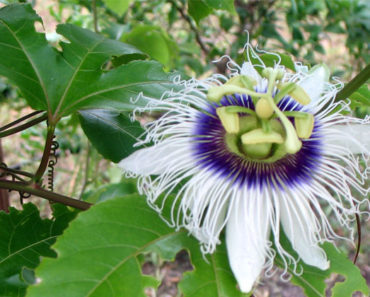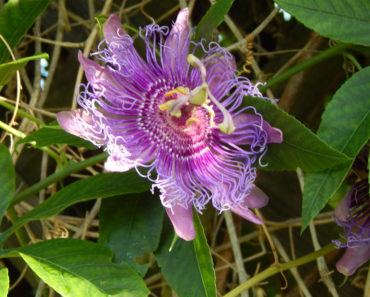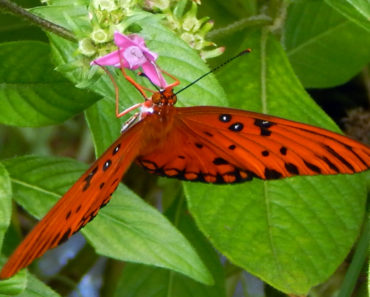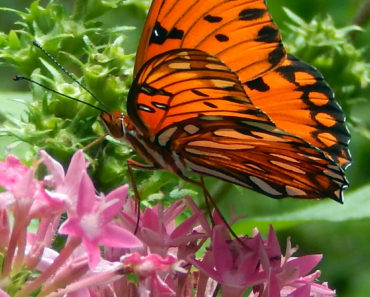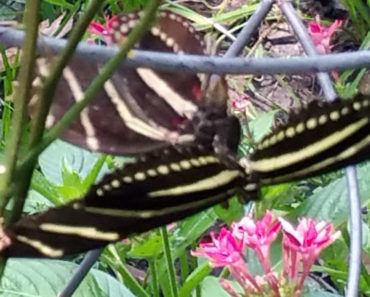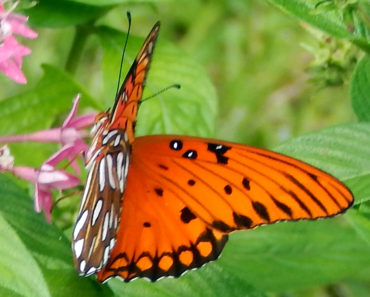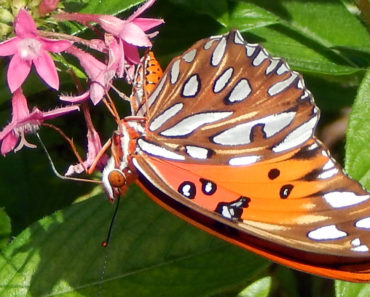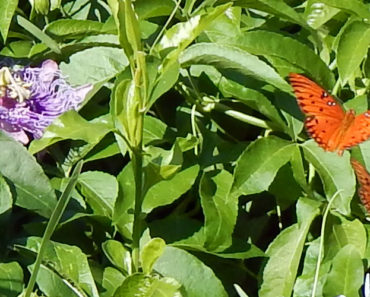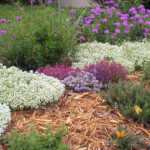Whether growing passion vine for fruit, flowers or as a fast-growing cover for an unsightly chain-link fence, passion vine butterflies will be quick to follow. In Florida these vines are host to the Gulf Fritillary, Julia, and Florida’s state butterfly, Zebra Longwing.
A butterfly host plant means hungry caterpillars devouring leaves. This may sound dreadful to those hoping to produce a nice crop of passion fruit. This, however, really shouldn’t be your main concern, especially with thriving plants that are constantly producing new leaves. A healthy passion vine can handle hungry caterpillars.
Your main concern should be attracting the right pollinators to achieve reliable fruiting.
Below, briefly, I’ll try to lay out a few basics.
Passion Vine Butterflies
Consider the Passion Vine in Nature
During a violent storm a giant tree falls in a Central American jungle. The clouds move away, and sunshine spills down into this freshly-made opening. Rain and sunlight quickly awaken a passion vine seed. The tiny plant sends out tendrils to grasp hold of anything and everything to help its rapid spread, outward and upward. Flowers form, each opening for just one day. Carpenter bees, and other native bees arrive to collect this new source of nectar. Fruit form, much to the delight of visiting birds that are all too willing to help spread the seed.
The passion vine has evolved to take advantage of sudden openings, to spread quickly, and to coax insects and birds into helping to complete its life cycle. Plants are very good at persuading insects and birds to act as their hands and feet.
Maypop (Passiflora incarnata)
While some passionflowers are self-fertile, the native maypop is not. A couple of varieties planted close-by will help, or you can hand pollinate. Remember, each flower is only open for one day. This could get tedious.
Encouraging Pollinators
Many native wildflowers will encourage native carpenter bees and bumble bees to linger in your garden.
- Blanket flower (Gaillardia pulchella)
- Spotted beebalm (Monarda punctata)
- Red salvia (Salvia coccinea)
- Lanceleaf tickseed and other Coreopsis
- Blazing Star (Liatris sp.)
- Blackeyed Susan and other Rudbeckias
- Ironweeds (Vernonia sp.)
- Purple Coneflower (Echinacea purpurea)
- Coral Honeysuckle and Walter’s Viburnum are also great additions to the bee-friendly garden.
- Bidens alba is one of our best bee plants, and also hated as an over-exuberant weed. But you can always cut it back to the ground after it blooms.
And this brings us back to passion vine butterflies. The more you encourage native bees with wildflowers, the more the butterflies will be drawn to your garden.
Corky Stem Passion Vine (Passiflora suberosa)
Corky Stem is an insignificant-looking vine with small flowers. It is also the preferred host by the passion vine butterflies in Florida. The zebra longwing prefers a corky stem planted in shade, and the Gulf fritillary prefers sun. If you want to keep the caterpillars off your fruit-producing vine, find a little space for a corky stem. Sure, you will probably still get caterpillars on your fruit-producing vine, but they can be relocated to the corky stem if this is a problem.
Possum Purple, Panama, Sweet Sunrise (Passiflora edulis)
Unlike maypop, the flowers of Passiflora edulis are self-fertile. Possum purple is the most commonly grown in Florida. Panama and Sweet Sunrise may also be available – I’ve never grown either. While self-fertile, fruit production will be improved if pollinators are encouraged.
Makes much more sense to me to work with nature, instead of trying to subdue it with chemicals. Kill the unwanted passion vine caterpillars? Sure, if you also want to kill the bees necessary for pollination. The vines grow too fast for the caterpillars to do that much damage, unless the vine is still very small. In that case you may want to keep it potted inside a screened area until it gains some size.
Know Your Passion Vine Butterflies
Gulf Fritillary Butterfly Life Cycle
Zebra Longwing Butterfly Life Cycle
